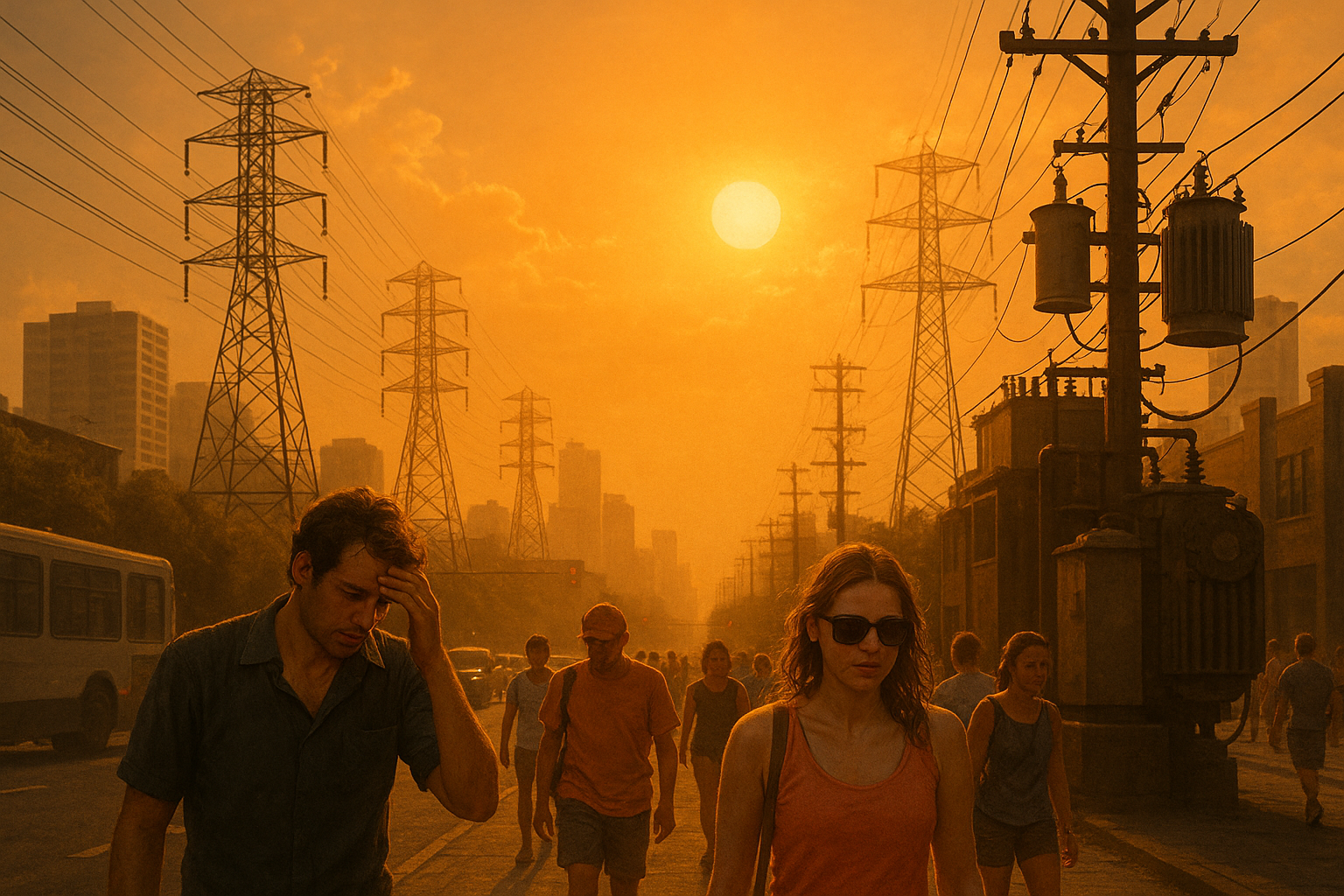The world is heating up — and not just metaphorically. In recent weeks, record-breaking temperatures have hit Europe, Asia, and North America at the same time, bringing intense pressure on people, cities, and most critically — power grids. What started as “just a hot summer” has now turned into an international concern.
The Heat Isn’t Just Uncomfortable — It’s Dangerous
In parts of Spain, India, and the southern United States, daily highs have climbed well past 40°C. It’s not just uncomfortable — it’s dangerous. Hospitals are reporting an increase in heat-related illnesses, while city officials warn residents to stay indoors during the hottest hours. But at the same time, millions of people are turning on air conditioning, fans, and cooling systems — pushing electricity networks to their limits.
In several areas, rolling blackouts have already started. Power companies say the demand is simply too high for the current infrastructure to handle. In some neighborhoods, people are left without electricity during peak hours — exactly when they need it most.

Governments Step In — But Is It Enough?
Local authorities are reacting. In France and Italy, public lighting is being reduced to save energy. In the U.S., some cities are asking large businesses to limit electricity use during the afternoon. In parts of India, officials have adjusted school hours to keep children out of the sun.
These are all short-term fixes. But the big question remains — what happens next summer, or the summer after that? With each year getting hotter, experts say the current power grids simply weren’t designed for this kind of strain.
A Wake-Up Call for the Energy Sector
Energy experts and climate researchers are calling this a warning. They say it’s time to invest in modern, resilient infrastructure that can handle both heat and demand. Solar energy, wind power, smart grids, and better insulation in homes — all of these will play a role. But changes won’t happen overnight.
For now, cities are doing what they can. And people are adapting — staying indoors, drinking more water, and watching their electricity usage. But one thing is clear: the heat is no longer just a seasonal inconvenience. It’s a growing challenge we’ll all need to face together.


